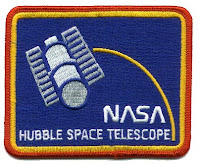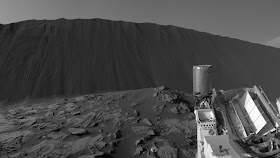NASA logo.
Jan. 9, 2016
Since the beginning of the space program, astronauts have dealt with the realities of spaceflight from microgravity in weak muscles and space radiation, to sleep deprivation and disorientation. Both before and during astronauts’ flights, changes in biological clocks, or circadian rhythms, contribute to sleep deficiency and increase the use of sleep-promoting medications.
For most people, the circadian rhythm is a little longer than 24 hours. On Earth, our daily exposure to light from the sun keeps us synchronized to the 24-hour day. As they circle around Earth in orbit, astronauts experience a sunrise or sunset every 45 minutes. Understanding the effects of spaceflight on astronauts may help prepare NASA for planning longer crew stays in deep space and possible missions to Mars, where the day length is a little longer than 24 hours. Most importantly, investigating these effects can reveal new ways to reduce the general consequences of the exposure of spaceflight on the human body.
At NASA’s Ames Research Center in California's Silicon Valley, Erin Flynn-Evans has been investigating the quality of astronauts’ sleep during spaceflight to better understand how sleep disturbances, such as noise and uncomfortable temperatures, cause sleep deficiency, which can throw off their circadian rhythms. Docking and undocking with the International Space Station requires astronauts to “slam-shift” their sleep patterns, which causes sleep disruption, much like people on the Earth who work rotating night shifts.
ISS sleeping astronaut. Image Credit: NASA
“Imagine flying across the country and getting jet-lagged,” said Flynn-Evans, a researcher at the Fatigue Countermeasures Laboratory at Ames. “It’s very similar to what astronauts deal with on the International Space Station, only the stakes are higher.”
Flynn-Evans and her team at Ames worked with Harvard Medical School and Brigham and Women's Hospital, both in Boston, to conduct a study to evaluate causes of sleep deficiency and the use of sleep-promoting medication by astronauts during spaceflight. Because mission operations often dictate completion of tasks during the biological night and sleep during the biological day, the team investigated whether circadian misalignment was associated with adverse sleep outcomes before and during spaceflight missions.
For a recently published paper in Nature Microgravity about the topic, Flynn-Evans and her team collected data from 21 astronauts over 3,248 days of long-duration spaceflight on the space station, including 11 days prior to launch, and reviewed sleep logs to determine sleep medication use and sleep quality.
Astronauts wore activity monitors similar to popular fitness monitoring wristbands during the study. The researchers evaluated data about the astronauts’ sleep episodes, including bedtime, wake time and number and cause of awakenings, ratings of sleep quality, medication and caffeine use for one week during their spaceflight.
“Rapid schedule changes are a problem, but so is exposure to light at times when the astronauts are scheduled to sleep,” said Flynn-Evans. “The crewmembers will often look out the cupola window to get a view of Earth during their scheduled sleep time, which can expose them to a bright blast of sunlight and inhibit their ability to sleep.”
Flynn-Evans says crewmembers often use tablet computers, which expose them to even more light before bed. The additional light exposure disrupts their natural sleep cycles and can prevent them from sleeping well during the day.
With the support of NASA grants, researchers at Brigham and Women's Hospital designed Circadian Performance Simulation Software (CPSS) to consistently predict the effects of sleep-wake schedules and light exposure on the human biological clock. When crewmembers slept when their biological clocks were promoting sleep, they slept longer and used fewer sleep medications. When they slept when their biological clocks were not promoting sleep, they had more disrupted sleep and used more sleep medication.
During the experiment, NASA researchers interviewed the astronauts and evaluated journal entries in order to better understand how they were being affected by sleep loss. They discovered that space station astronauts as well as shuttle astronauts slept for just six hours per night on average, when most mission schedules called for 8.5 hours. Another finding revealed that where astronauts launched into space made a significant difference in disruptions to sleep patterns. In the weeks before astronauts took flight, those launching from Baikonur, Kazakhstan, compared to launching from Cape Canaveral, Florida, experienced better sleep. This could be due to other variables, such as training and preflight preparations and/or social activities or recovery from jet lag to get to Baikonour. In any case, astronauts used sleep aids to help them sleep most nights during preflight.
International Space Station (ISS). Image Credit: NASA
NASA is working to make improvements that promote astronaut crew health during spaceflight. Suggestions include special blue LED lights to help fight insomnia experienced by astronauts, spacecraft designed with luxuries of Earth to make sure astronauts are more comfortable while in space and more efficient schedules to balance the astronaut work-sleep times.
Still, more needs to be understood about the limitations of the human body in space. As the first one-year mission of living onboard the space station concludes in March 2016, studying the patterns of sleeping and waking is crucial to ensuring a well-rested astronaut crew for future deep space exploration missions.
For more information about living in space on the International Space Station, visit: http://www.nasa.gov/mission_pages/station/main/index.html
Related link:
One-Year Crew: http://www.nasa.gov/content/one-year-crew/index.html
Images (mentioned), Text, Credits: NASA/Ames Research Center/Kimberly Williams.
Best regards, Orbiter.ch
















































